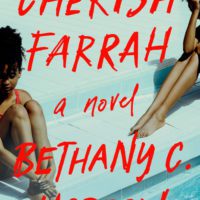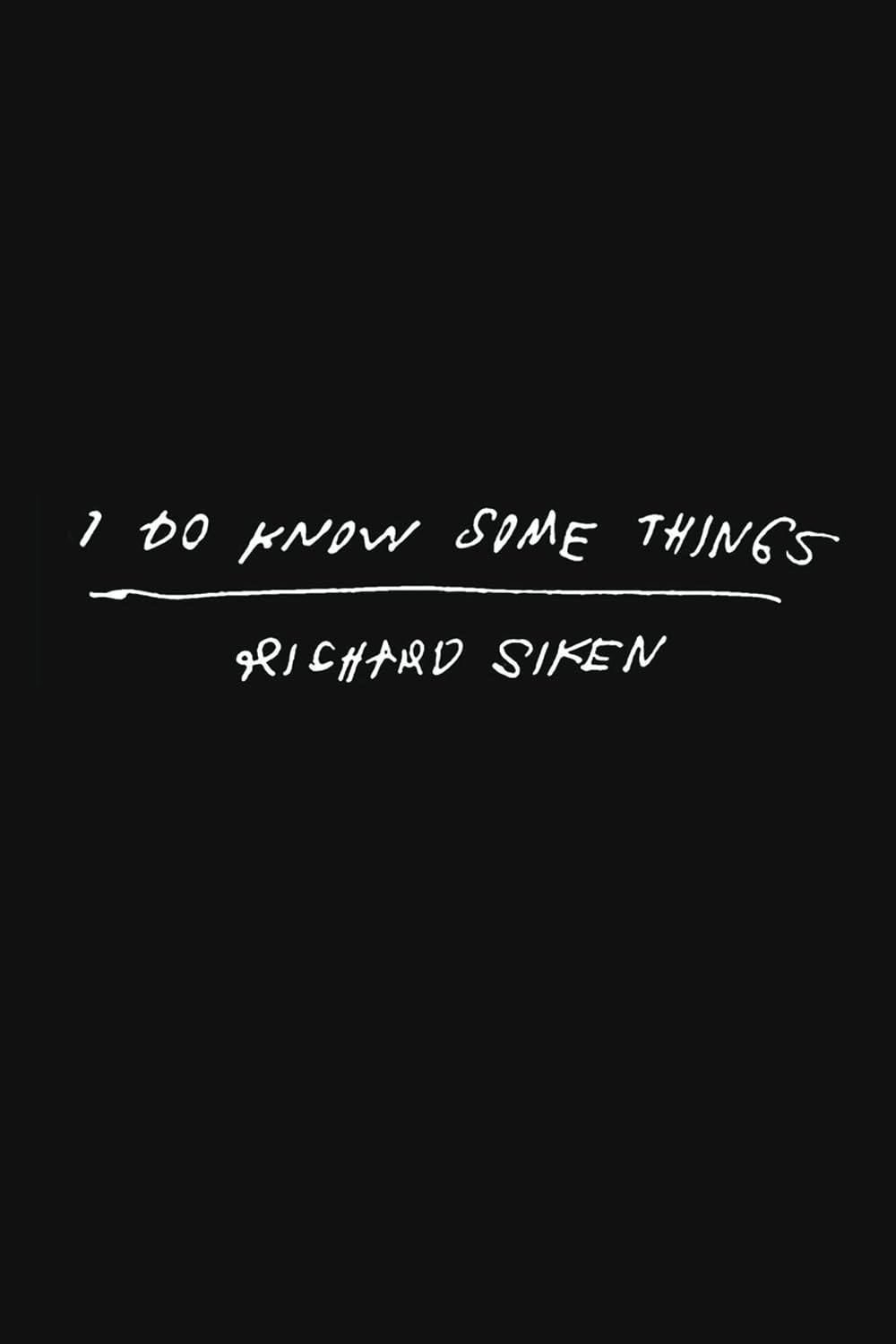I don’t believe the word “mind-blowing” is an adequate description of Bethany C. Morrow’s Cherish Farrah, but it’s the closest that language has to offer. Although I’ve always been drawn to horror in both literature and film, Morrow’s book is a different breed: It grips the senses and left me wanting more and feeling desperate for an abrupt end to its viciousness, all at the same time.
Farrah Turner is a budding psychopath who lives with her best friend, Cherish Whitman, in a country club neighborhood dripping with wealth, status, and comfort. When Farah’s mother loses her job and her parents are facing foreclosure on their house—a financial issue that’s out of sync with the generational wealth of the community they live in—Farrah moves in with Cherish. Cherish is adopted, with white parents who try to overcompensate for their evident differences by showering their daughter with affection and sheltering her from the reality outside their lavish community. Unfortunately, the biggest threat sleeps alongside Cherish every night, sharing her interests, food, and closest friends. The two form a dangerous bond that blurs judgment and eventually incites violence.
On the surface, Farrah appears to be an average teenager: curious, witty, and a little rebellious. She has schoolgirl crushes, and she sometimes argues with her parents. But it’s easy to see there’s something disturbing about her. She’s obsessed with control, and she’s a little too attached to Cherish. Most disturbing of all, though, is that she understands that she’s playing a role, mimicking others her age when she’s darkly different. “I’m cosplaying a teenage girl, reveling in an obnoxious display of self-centeredness meant to declare that I’m carefree—even though it’s safer to be constantly aware,” she thinks. Farrah’s is a terrifying mind to inhabit.
Although we get a clear sense of her deviance, Farrah is a complicated character. It’s hard to decipher if she has become damaged by the subtle but racially oppressive dynamics in her environment, or if she came into the world inherently damaged and ends up altering everything around her. In any case, while reading this book, the same questions taunted me: Farrah’s not a “good” victim, but does that mean she’s not a victim? More importantly, is she allowed to be both a victim and an offender?
These questions forced me to face a previous mis-education on my part: The belief that only white people can be “plagued” with some kind of underlying disorder that leads to the destruction of themselves and those around them, the flawed conviction that Black people, or those in marginalized communities, are above or beneath these kinds of struggles. Morrow’s book challenges us to re-think the idea that Blacks are solely the vulnerable ones, and that our vulnerability makes us incapable of oppressing others. This type of conditioning only helps perpetuate white privilege and de-center Blackness. It dismisses the depths of Black people’s trauma by shouting, “Even whites dominate psychotic tendencies, because only white people have deep-rooted pain that can warp them into walking disasters.”
Put plainly, that impression is the lie of all lies. While Morrow doesn’t show Farrah experiencing some type of in-your-face injustice like police brutality or a sexual assault that injures the narrator’s psyche, there’s an ominous backdrop at play in the story. The community that she’s part of seems eerily wholesome—a Stepford Wives-meets-Get Out 2.0 black hole. And as ugly truths start coming to the surface, I found myself torn between rooting for Farrah and condemning her actions. Morrow is a master at building this back-and-forth sensation within her audience, posing dilemmas that require the reader to grapple with their own values and hit at the core of what they view as right and wrong.
Farrah’s psychopathy manifests in varied ways. One is her fixation with control: She always needs to feel that others are at her mercy and that she’s the one with a handle on any given situation—particularly when it comes to her dealings with Cherish and the Whitmans:
There is no excuse for my weakness, betrayed or not. Especially when betrayed. I am teaching my parents and anyone paying attention that—like everyone else—I am weakened by defeat. I refuse to be when there’s an alternative they do not expect. So, control. Of what—and when—I let them see.
In her quest to be above what she considers human frailty, Farrah picks at the perceived inadequacies of those in her space. Take Cherish, for instance. Farrah’s constant belittling, devaluation, and infantilizing of her best friend feeds her deluded belief that she knows what’s best for both of them and further justifies her growing attachment to Cherish and her parents: “I choose the Whitmans’ house. I choose Cherish for my home, the way I should’ve done from the start. She’s the only person I love when I hate her.”
Farrah’s obsession with pinpointing defects in others is also apparent in the way she needles her mother, Nichole:
. . . my mother has a flaw. A hint of a dimple in her left cheek. She wasn’t born with it; she says she fell when she was a child, that it’s damaged tissue, not an adorable feature like Cherish’s—but that’s the way it looks. It softens her when she needs to look assertive. It tells on the slightest twitch of her lips and makes her look uncertain. Vulnerable.
But for all her nitpicking against her mother, Farrah longs to make her mom into a warped copy of herself, to make herself believe that she and Nichole are the same. This suggests that Farrah needs to find comfort in knowing she’s not alone in her twistedness, so she doesn’t feel so bad for not having a conscience. At one point, Nichole even flatly addresses her daughter’s reasoning, asking, “Why do you do that? Why do you need to think I’m a monster, too?”
It’s easy to wonder if Farrah also needs to have someone mirror her appearance, or vice versa. While it’s evident that she copies Cherish’s mannerisms, it’s not so obvious whether she’s also taken on her best friend’s appearance. Are the two doppelgängers? It’s unclear throughout the book what each girl looks like, but does it really matter? Maybe the author’s vagueness around the girls’ physicality is kind of the point. Their centers eventually merge, creating one big blob of toxicity.
At the same time, it’s hard not to relate. Many of us have experienced similar troublesome friendships as we’ve matured. In the vein of transparency, let me speak for myself: Growing up, I’ve been caught in some karmic friendships that forced me to thicken boundaries and come to terms with latent codependency issues. Acknowledging the red flags and the patterns isn’t easy, but it’s necessary for healing and the soul’s survival.
Morrow is, in a very real sense, teaching readers—particularly young adults—what unhealthy attachment looks like through the lens of a psychopathic narrator. Cherish Farrah is a view of the spectrum of Black girlhood tainted by the dynamics of race and class. A coming-of-age story flipped on its head. The breech baby of Toni Morrison’s classic Sula. The traditional wholesome YA narrative, swallowed and regurgitated.
Like Morrow, a lot of Black horror writers and creators explore social critique while experimenting outside of commentary. In doing so, they create what can be termed “sociological horror”—an indictment of the American imagination, as social horror demands acknowledgment of what the dominant culture denies. Near the end of the book, Cherish’s adoptive mom admits her involvement in turning Farrah into the family’s whipping girl—a scapegoat who absorbs Cherish’s pains and challenges as she navigates her community as a Black girl:
Black Americans, you don’t realize how much you’ve benefited from all the pain and suffering. Being forced to be resilient and authentic in ways white Americans can never be. You don’t wonder what you’d lose if these systems were dismantled completely. . . . We need the pain, but you couldn’t stand to see your own child experience it firsthand. . . . But then she met you. And you showed us what to do. When she was hurt, you hurt yourself, and we knew. You could hurt for her.
Bodies of work focusing on social horror, like Morrow’s, shows how complicated existence is for Blacks while stripping away the privilege of illusion for white people. There’s nowhere to hide. No way to deflect. All of us are left facing down the naked truth. Ensnared by the light of a horror that society can’t turn off.




